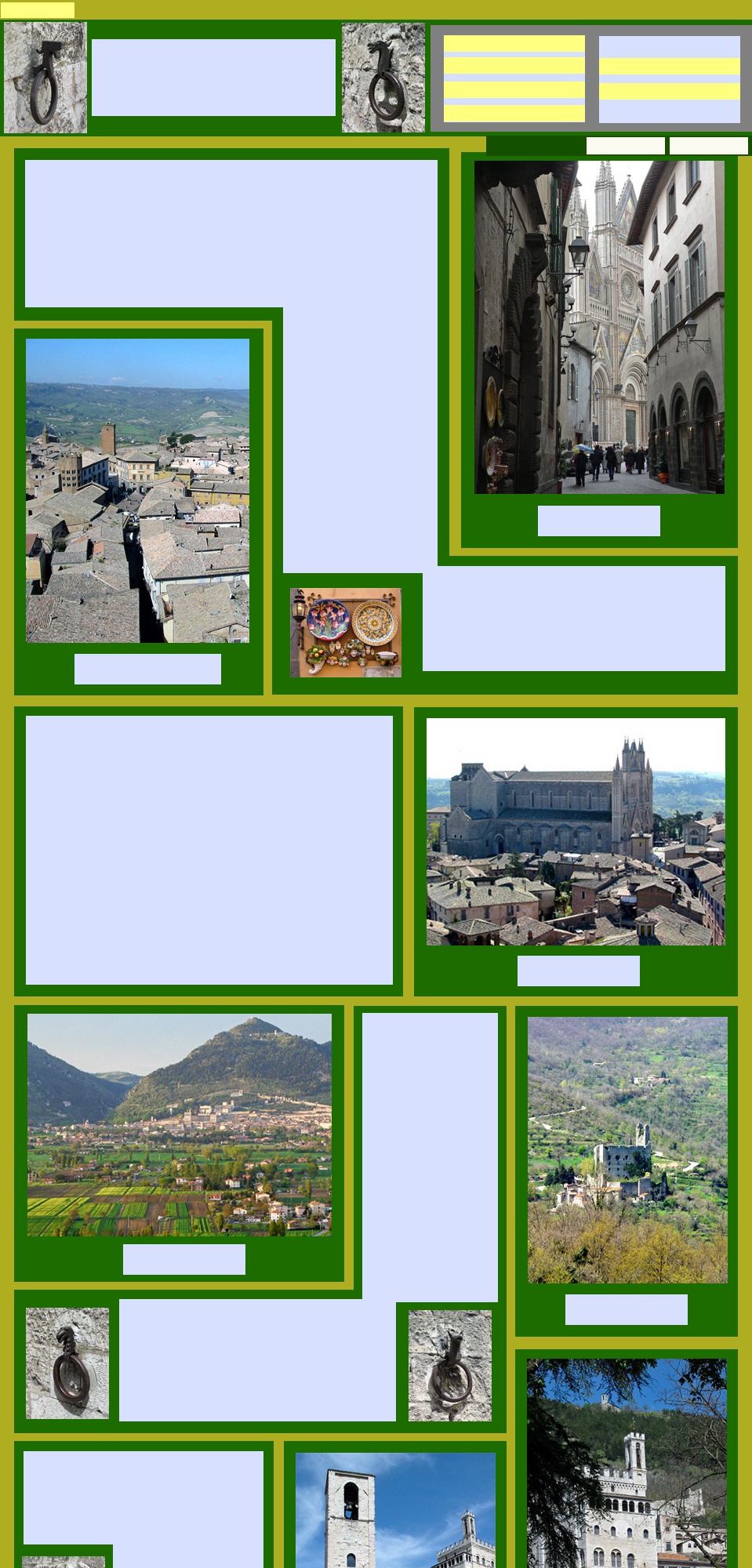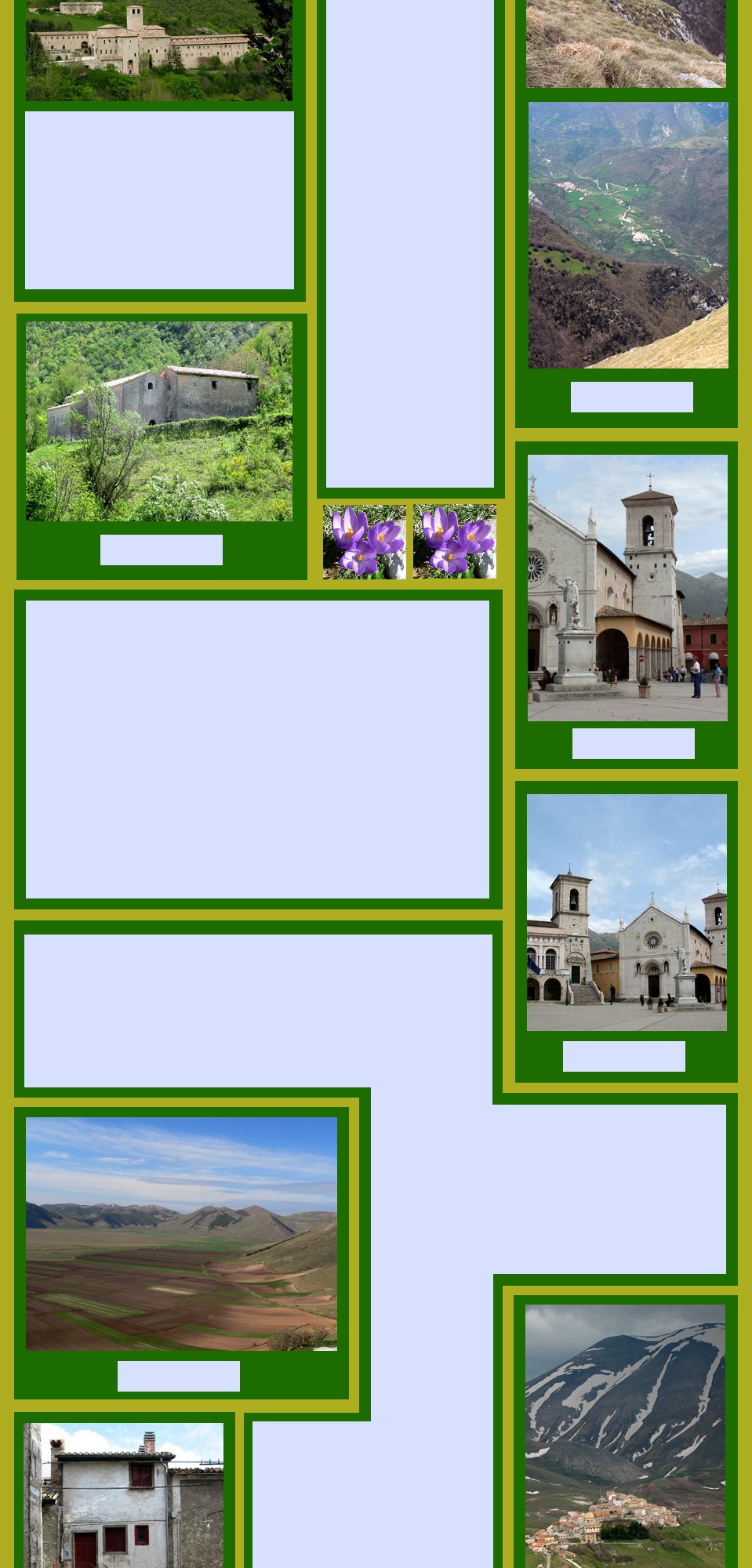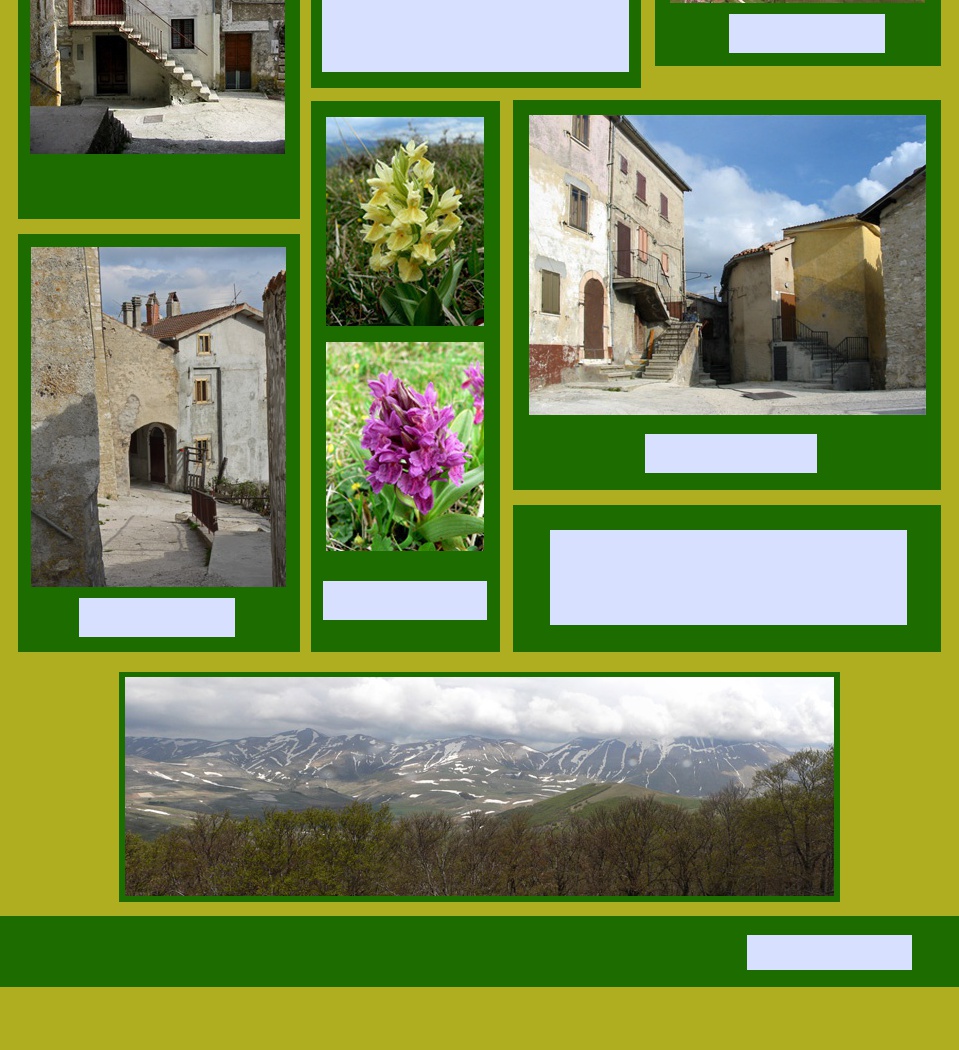Orvieto is a beautiful city. It is constructed on cliffs of volcanic tufa and exists on two
levels. Above ground are the remains of an Etruscan and Mediaeval city side by side
with the "modern" city as it has existed since the 16th century. Underground the city
is riddled with an intricate labyrinth of tunnels, galleries, cisterns, wells and cellars.
More of Umbria
Orvieto
We arrived in Orvieto having completed a walk of 115 km through the classical
countryside of Umbria (link) and were feeling it was time for a change of pace. With
two days to spend in Orvieto where the walk had finished, we bought a ticket to see
all the significant sites of the city and joined the happy holiday crowds enjoying the
Pentecost long weekend.
A tour of the underground caves opens up a startling
perspective of the city's defences and ability to survive a
siege. Thousands of pigeons were kept in what must have
been the world's biggest dovecot, there are cisterns and
wells to store water, and there were olive presses and deep
storage chambers. As recently as World War II these caves
were used air raid shelters.
The centrepiece of the city is
the enormous gothic Duomo,
with its beautiful mosaic
facade and strangely
incongruous green and grey
side walls. All is best seen
from the top of the Torre del
Moro whose 250 steps you
climb for sweeping views of
the city and surrounding
countryside. The cathedral
stands tall above a jumble of
tiled rooftops, crooked
winding streets and the
towers of smaller churches.
The streets are lined with
small shops selling colourful
ceramics and many
restaurants and bars
Moving on
After three days of town life, there was still much more we wanted to see and
do in Umbria and neighbouring le Marche. So we caught the funicular railway
to the base of the cliffs to the commercial city of Orvieto where everyday
business is conducted. From here we set off in a hire car to make a base in
Gubbio for ten days and then to explore the area known as the Valnerina,
round Norcia.
On the way was a detour to take a look at Lago di Trasimeno, Italy's fourth
largest lake and a popular holiday location. But rather than its recreational
potential, the interest to us was its place in Roman history.
In 217 BC, right there where we were, Hannibal's Carthaginians ambushed
and nearly annihilated the Roman army. On a foggy morning 15,000 Roman
soldiers were killed on the shores and in the waters of the lake. It was one of
the bloodiest battles in Roman history.
There is little to see now, just a peaceful rural setting, a small museum and
some maps and plans describing how the battle proceeded. Perhaps
surprisingly, there are no artefacts or relics on show.
Gubbio
Gubbio sits half way up
the slopes of the
conically shaped Mt
Ingino, above a flat green
collage of farmhouses,
ploughed fields and tree
lined winding roads. Its
austere stone buildings
mount in terraces up to
the very fine Piazza
Grande where the Duomo
and the Palazzo Ducale
dominate the town.
A little further up the
hillside is the Basilica di
Sant'Urbaldo which plays
a significant role in the
town's spring festivities.
From the wide range of accommodation in the area, we
had selected Agriturismo Montelujano, just a short
distance from the town. The choice was inspired. Our
apartment was one of several in a group of simple
traditional buildings dating from the 15th century. From a
hill above the plain it faced directly towards the splendid
vista of Gubbio. The view extended to the east to take in
Mt Cucco, which at 1566m was still wearing patches of
snow.
Gubbio was an important settlement of the
Umbrian people who lived here in pre Roman
times and one of the town's treasures is a set of
bronze tablets, known as the Eugubine Tablets.
These date from 300-100BC and constitute the
most significant surviving text of the Umbrian
language.
It was an important Roman
town and became a powerful
city in the middle ages.
There followed centuries of
local warfare before it was
incorporated into the
territories of Montefeltro,
finally becoming part of the
papal states which were
incorporated into the
kingdom of Italy in 1860.
In the days we spent exploring Gubbio the
things we loved most were the centuries-old
palimpsests of stonework in the narrow streets,
the curious iron hitching rings on the old
buildings, the piazzas and grand palaces. There
was a busy weekly market and dozens of little
shops selling more brightly coloured ceramics.
La Corsa dei Ceri
We knew that Gubbio's most spectacular "event" was the Corsa dei Ceri, held every year on 15
May but as our dates didn't co-incide we were resigned to missing it. This is a festival in honour of
Sant'Ubaldo, the town's patron saint and involves three massive "candles" (or ceri) being raced
around the streets by rival teams.
To our delight, however, there was a prequel to the main event when the ceri are brought down the
mountain, from the church of Sant'Ubaldo, to be on show in the Palazzo Ducale till the big day.
This event was during our stay.
The day started early as a huge crowd, dressed in team colours, took up vantage points. Everyone,
but especially the children, were dressed in red/yellow, blue/red or black/red and banners hung
from every window round the town and the district.
We found a good spot and watched the crowd till the sound of drums and bands heralded the
arrival of the ceri, carried on their sides like huge canons by big strong men. Sitting astride each
ceri all along its length was an excited band of little children decked out in the team colours and
waving flowers. Each ceri was preceded by a band and surrounded by hundreds of supporters.
When they reached the Piazza Grande the ceri were given a run around a flagpole and then taken
up into the Palazzo where they would remain till the celebrations in two weeks time. It was a
wonderful spectacle.
Monte Cucco and beyond
When it came time to do some walking we looked no further than Monte
Cucco, the big lump of mountain looming in the view from our windows at
Montelujano.
Monte Cucco, a significant peak in the northern Apennine range, is
contained within a regional park where there are mountain meadows,
woods and spectacular rocky gorges. This is limestone country so there
are soft slopes and deep holes and kilometres of underground caverns.
The Rio Freddo encircles the mountain and runs east through spectacular
waterfalls and rapids in a deep ravine. Further east, into le Marche, is even
more wild country.
Hiking, caving, mountain biking and paragliding are among the most
popular activities. There are also some interesting roads to explore and
villages and ancient abbeys to discover.
We were drawn out to this area several times, but first to do some
walking. There are well marked trails throughout the area and an excellent
brochure produced by the park authorities describes a number of
itineraries and is full of useful information.
Choosing what looked like one of the best circuits, we drove to the start point at a
launching area for hang gliders and set off on a well marked path to walk around and
over the mountain. The pathway climbed along the contours round the mountain
with splendid far reaching views. There were orchids and other wildflowers hidden
away in protected patches of grassland.
Through patches of snow and then woodlands we gradually climbed up until a side
path diverted to the summit and its panorama over the surrounding mountains and
valleys. On clear days you can see a very long way, even to the Adriatic sea. We
weren't so lucky, but the immediate vista was pretty good, looking towards more
craggy mountains and deep valleys dotted with villages that were linked by tortuous,
winding roads.
We came back to this area
another day, negotiating some of
the winding roads to investigate
the villages and also the abbeys
and hermitages that were
established here from, perhaps
the 10th century. This wild and
isolated area was a popular place
for hermits to hide themselves
away. Some of their ancient
buildings are still to be seen in a
forest environment that is still
pretty bleak and isolated. Only
Fonte Avellana is still in use.
Another trip took us deep into the
mountains of le Marche to the
fantastic Grotte di Frasassi. Here
there were huge caverns with
impressive columns and shapes
and side caverns where delicate
crystalline formations were
illuminated. A river flowed deep
below the walkway. Caverns run
for about 35km under the
mountains but tours only cover
1km of this wonderland. The visit
includes an enormous cavern into
which, they say, Milan Cathedral
would fit.
Anyone who has done any
drawing or painting will be familiar
with Fabriano paper which, since
the 13th century has been made
in the town of Fabriano, just east
of Monte Cucco. Its paper is still
used worldwide, there is an
interesting museum in the town
and many shops selling lovely
paper, some of which found its
way home with us.
Coming down from the top, the
steep pathway passed the
entrance to the cave of Monte
Cucco which is 30km long and
945m deep. Apparently only open
to specialist groups, the entrance
was closed by a locked grilled
gate which allowed you to peer
down into the entrance cavity.
"Cucco" in a local dialect means
"something empty", so the deep
cave system gives its name to
the mountain.
Between two shores of Italy, not far
from your birthplace, rise great crags so high
that thunder sounds from far below their peaks;
they form a humpback ridge called Catrìa
below which stands a holy hermitage
once dedicated to God's praise alone.
Monastery of Fonte Avellana
Founded early in the eleventh century.
Dante stayed here in 1310. He mentions it in his
Commedia Divina.
(Paradiso, Canto XXI - Tr. Mark Musa)
Norcia
Leaving Gubbio we made our way south by way of a series of small mountain roads, to Norcia.
This area, still just in Umbria, is known as the Valnerina, named for the River Nera which rises in
the Monti Sibillini and goes on to join the Tiber after flowing south for 116km. This is a very
popular area for walking and the area is criss-crossed by tracks.
Norcia is in a stunning setting, encircled by its 14th century walls with the craggy slopes of Mt
Sibillini forming an imposing backdrop. Its main points of interest are its central piazza, certainly
not a square, surrounded by solid, elegant flat faced buildings and many wonderful food shops
stuffed with black truffles and tantalising aromatic salamis.
There have been some bad earthquakes here (1763, 1859 and 1979). The city wall has always
withstood them but other important buildings suffered and needed to be restored.
In Italian towns we have frequently seen posters pasted on walls and posts advising of a recent
demise - a very public sort of death and funeral announcement.
While waiting for the tourist office to open we hung around the piazza, and observed a doleful
gathering at the 14th century Church of San Benedetto. Posters attached to buildings round the
town announced the funeral of Gianni. The arrival of a cortege and a cavalcade of leather clad
young men on motor bikes suggested that Gianni was a dare-devil rider who hadn't made it
around a tight bend that weekend. We saw near misses all the time.
Castelluccio and the Piano Grande
The Piano Grande was the magnet that had drawn us to this area. We had read lots about these
high plains and the spring and summer fioritura, or annual eruption of flowering wild plants, but
nothing really prepares you for this place.
Driving up a steep winding road, seemingly towards the top of a mountain, suddenly we were on
the top and spread out before us was this vast flat plain, encircled by a rim of mountains patched
with drifts of snow. The spring was late in arriving that year so there was not the anticipated
panorama of brightly coloured flowers, but instead an amazing patchwork of fields in different
hues of green and brown. Far in the distance on a slight rise was the hilltop village of
Castelluccio. Rising up behind the village was Mt Vettore 2476 m, the highest peak in the chain.
Castelluccio was almost a ghost town of firmly shuttered buildings,
many in a state of crumbling disrepair. They told us that the village is
sometimes used as a film set and it would certainly be hard to find
anywhere more picturesque and quaint.
There was one place to stay, Albergo Sibilla, and we booked a room
overlooking the piano, for a couple of nights. Indeed it would be hard to
find anywhere in the town that didn't overlook the piano. The view looked
out to the towering mountains and over the activity down in the fields as
tractors worked their way up and down the long rows, presumably
preparing them for the crops of lentils for which Castelluccio is famous.
The restaurant served wholesome meals of local salsiccie and, of
course, lenticchie.
For walking we were
spoiled for choice. You
could do a walk right
around the rim above
the plain, take a route
across the plain or you
could do circuits up
into any one of the
mountains around the
village.
We chose to walk up into the mountains, first
following a rough road to gain some height and
then following a delightful track that wound
through snow drifts and forests, all the time
looking down onto the piano and across to the
mountains on the other side. Walking doesn't
get much better than this.
It was quite cold and we watched as dark
clouds engulfed Mt Vettore and eventually
closed in on us with a brief hail storm. But this
passed quickly and we found a place for lunch
and then continued down through beech forests
and meadows where orchids and other flowers
were popping up.
Another hearty meal at the albergo marked the end of our
Umbrian explorations. Now we were to move south to
investigate the big peaks of the Central Apennines and the
opportunities for walking in the Abruzzo, Gran Sasso and
Maiella National Parks.
Orvieto
View from Torre del Moro
Orvieto
Cathedral (duomo)
Orvieto
View of Gubbio from
across the valley
Ruin and landscape near
Gubbio
Children in the colours of
the three teams astride the
ceri in procession
Umbrian mountains from
Monte Cucco
A stop for ice water
Two valleys below
Monte Cucco
il Piano Grande
Castelluccio and
the Sibillini Mountains
Two street scenes
in Castelluccio
A piazza in Castelluccio
Orchids near Castelluccio
Palazzo Ducale
Gubbio
Bell Tower, Gubbio
Palimpsest, wall in
Gubbio
Abbazia di Santa
Maria di Sitria
Church of San
Benetto, Norcia
Piazza di San
Benedetto, Norcia
See pictures of




